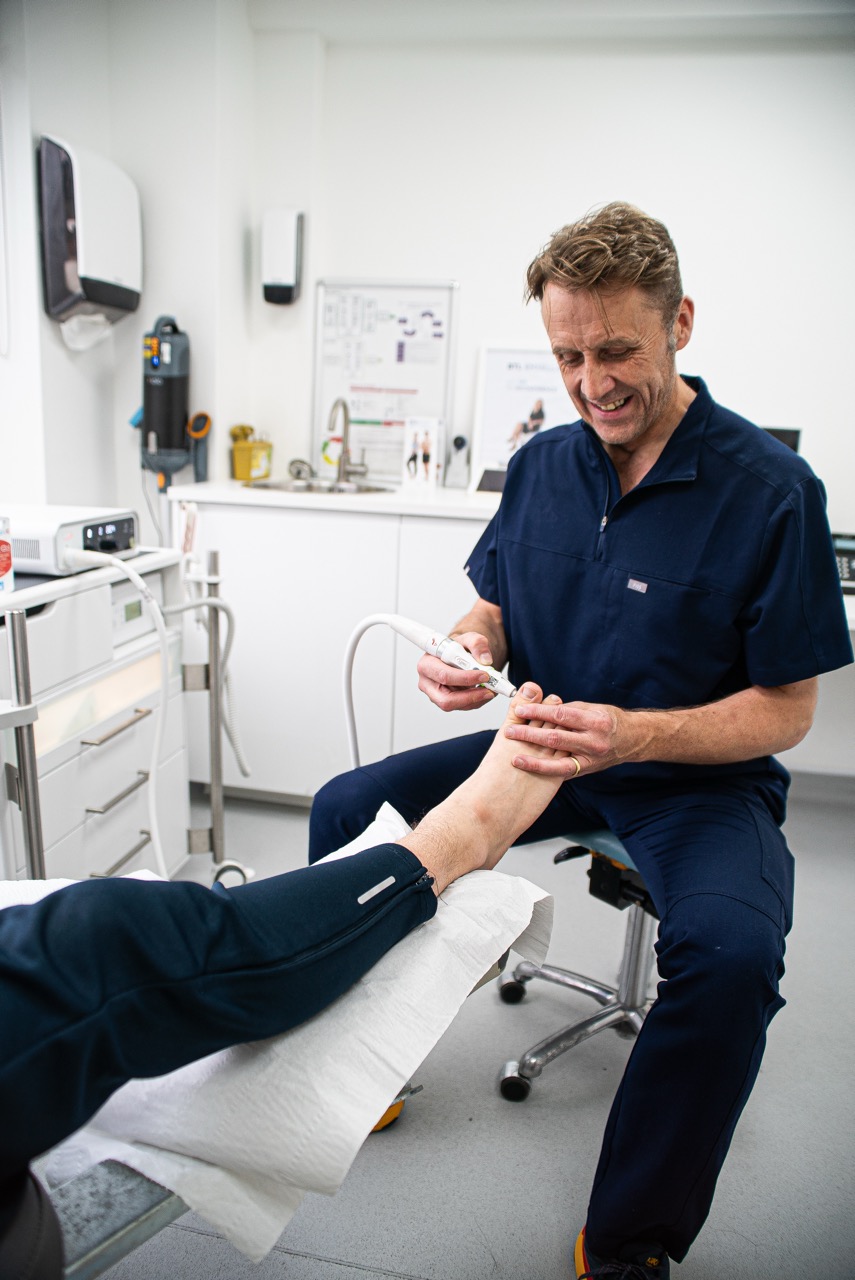Join The Nantwich Clinic Club to keep up to date with news and offers!
Sign UpWalking or standing is a part of everyday life for most people, and when we walk or stand we carry our body weight on the heel and then on the ball of the foot. The skin here is thicker and is designed to be able to withstand the pressure of holding your entire body weight. When this pressure becomes too much, it can cause the appearance of corns on the feet which occur over a bony prominence, such as a joint.
A corn is a hardened layer of skin that develops as a defence mechanism to help to protect the foot and its internal structures.

‘Heloma durum’ are the most common form of corn. They appear as small, concentrated areas of hard skin. Their conical shape intensifies the pressure at the tip and can cause painful, deep tissue damage and ulceration.
‘Heloma molle’ develop in a similar way to hard corns. They are whitish and softer in texture. They appear between toes, where the skin is moist from sweat, or from inadequate drying. A Podiatrist will be able to reduce the bulk of the corn, and apply astringents to cut down on sweat retention between the toes.
‘Heloma miliare’ are particularly small and tend to be less painful.
‘Heloma neurovasculare’ corns incorporate minute blood vessels and fine nerve endings. They are likely to bleed when they are cut and can be very painful.
Fibrous corns have a very similar appearance to regular corns. However, they are significantly more painful and sensitive to pressure due to having nerve fibres within them. They are more often found on the feet of smokers, so have also got the nickname ‘Smoker’s corns’.
Do not cut corns yourself, especially if you are elderly or diabetic. Do not use corn plasters or paints which can burn the healthy tissue around the corns. Home remedies, such as lambswool around toes, are potentially dangerous.
Commercially available ‘cures’ should be used only following professional advice.
Because they form in similar ways, people often confuse a corn and a callus but they are not the same. While a corn is a form of callus, not all calluses are corns.
A callus is a thickened area of skin that is also formed by pressure or friction, but the difference is that they are often considered to be painless and don’t have the hard centre that tends to present itself with a corn.
Another thing that separates the two is that a corn can form on areas of the feet which do not bear weight, like the sides of the toes or the top of the foot. With a callus, these always form at distinct pressure points as a result of friction.
Orthotics are a special type of insole that can be fitted into your shoes. They will help you walk in such a way to minimise the pressure on your affected joints.
As well as an orthotic, our Podiatrists can help you find shoes that are roomy enough to accommodate your foot – and orthoses – without adding unnecessary pressure. If your toes are beginning to stiffen or curl, for example, it’s important for you to wear a shoe with an extra deep toe box.
Our podiatrist may scan your feet, so a shoe can be tailored to your exact foot shape. Or we can send away for “off the peg” shoes which may be the right fit. Protective shields can also relieve pressure and reduce friction.
Book your Corn treatment appointment with The Nantwich Clinic by calling the number below.
Alternatively, you can use the link below to book online.

Whether it’s a quick question that you need to ask, or you would like to book an appointment with us, we want to hear from you. Simply click the button below to get started or contact us on 01270 627118.
